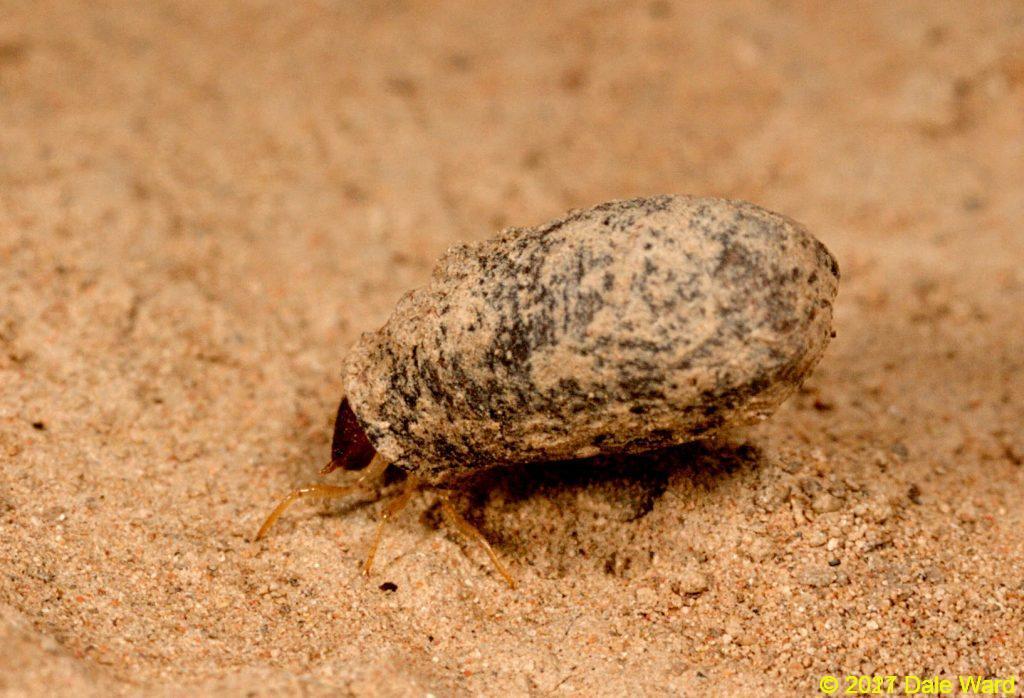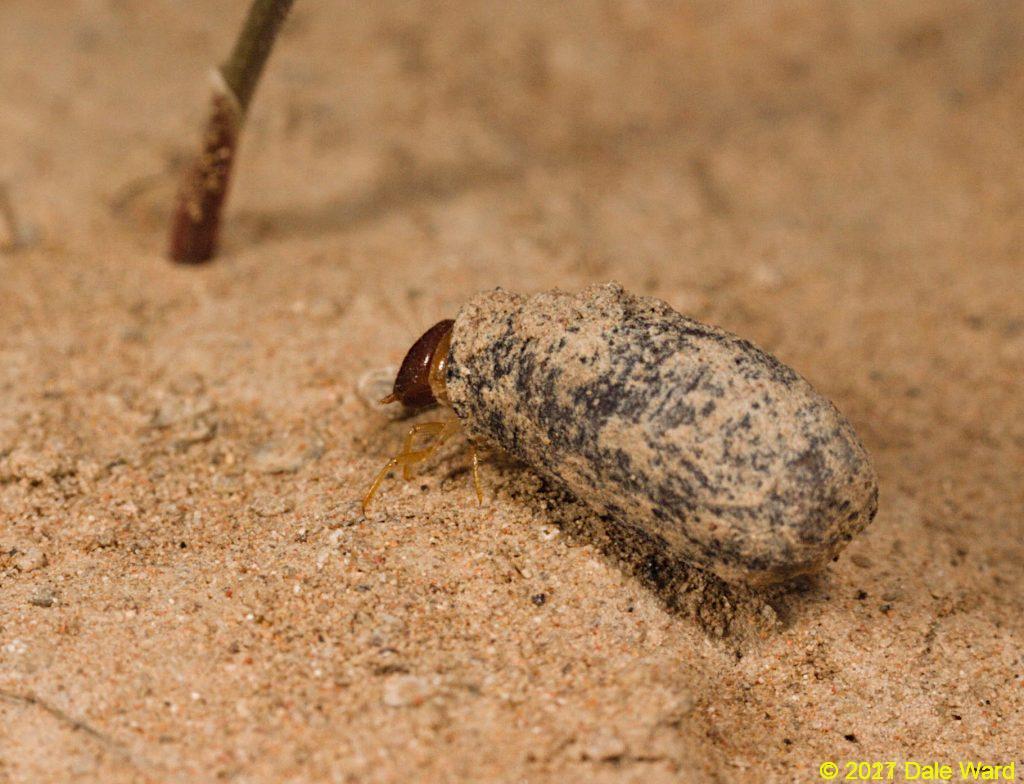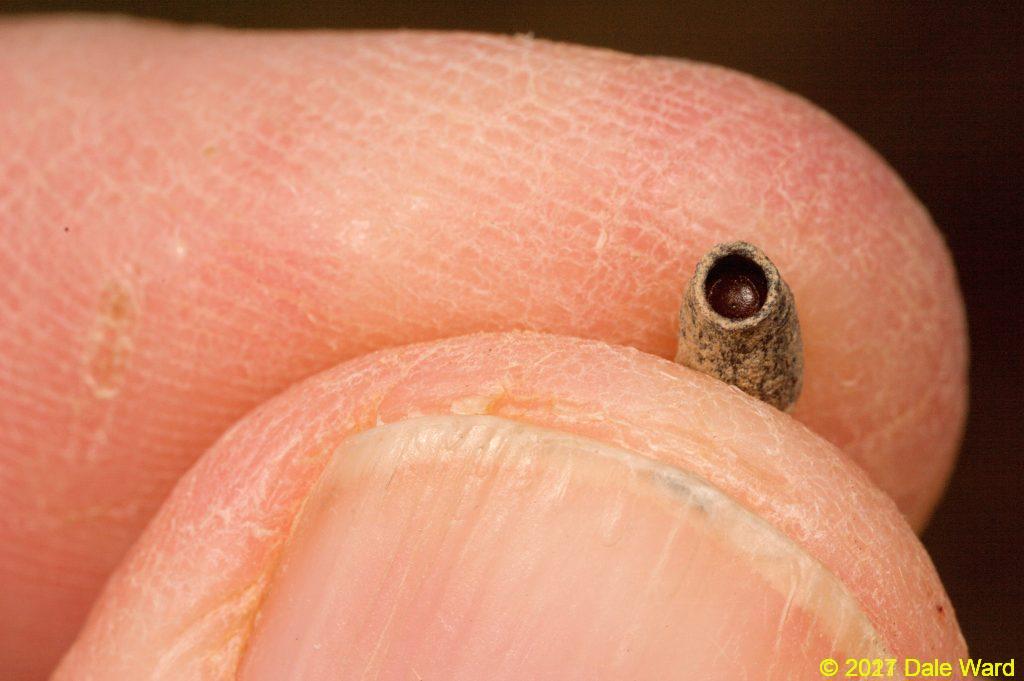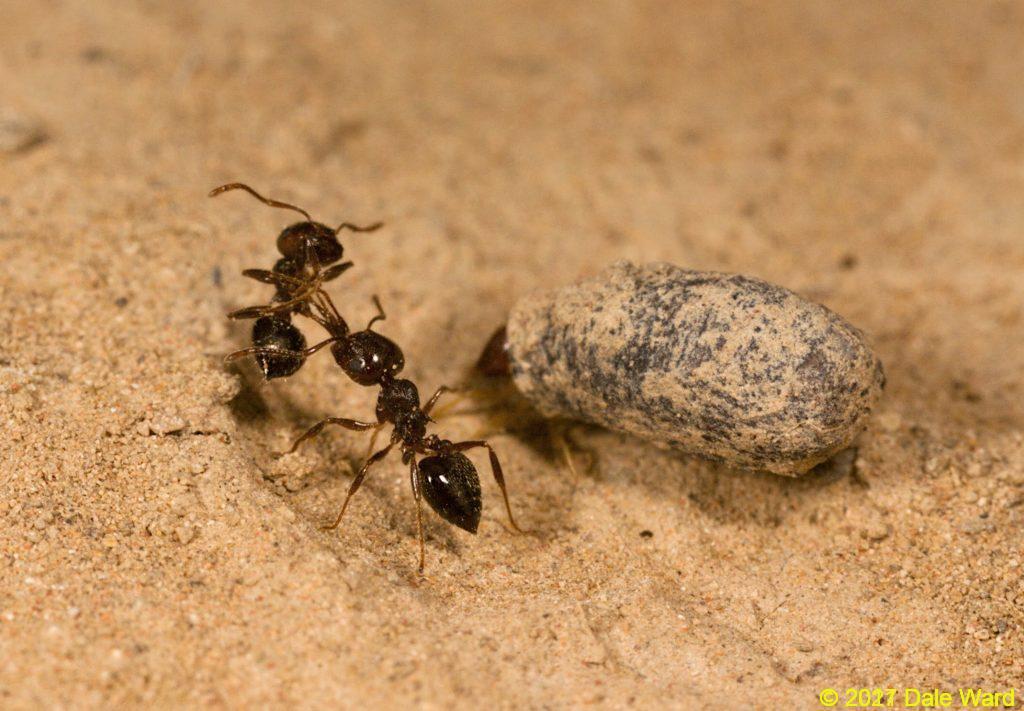Case Bearing Leaf Beetle - Perhaps Not a Model for Personal Growth
Watching a Case Bearing Leaf Beetle in Southwestern Colorado
 Cryptilinid Leaf Beetle larva in its case, walking
Cryptilinid Leaf Beetle larva in its case, walking
In October of 2005, I was crawling on my hands and knees at the Totten Reservoir boat dock in Montezuma County, Colorado. I was prospecting for ants. I happened to notice a small, maybe 1 cm long, gray and brown seed on the ground.
As I watched it, the seed started to move.
I looked a little more closely and saw that the seed had…legs. And a head. Okay, now this was weird.
 Cryptilinid Beetle Larva walking, with case
Cryptilinid Beetle Larva walking, with case
It looked for all the world like a Caddis Fly larva as it walked along. But Caddis Fly larvae are aquatic. Hmm.
Was this a terrestrial Caddis Fly?? I’ve not heard of such a thing.
 The beetle larva between my fingers. It has withdrawn into its case.
The beetle larva between my fingers. It has withdrawn into its case.
I picked the funny-looking cased insect up in my fingers. It withdrew its head and legs back into its case. The open end of the case was mostly plugged by the top of the larva’s head. It still looked like a Caddis Fly larva.
I put the little critter back onto the ground. After a few minutes, its legs emerged, and it crawled slowly away.
I clearly had no real idea what this critter was. I contacted Lloyd Davis and he suggested that it might be a Leaf Beetle larva.
I poked around on the internet for a while - and lo, he was correct.
I found a similar photo on the Insect Identification website. The little fellow I found looks to be a “Case Bearing Leaf Beetle” - a member of the Chrysomelid family of beetles, in either the Cryptocephalinae or Lamprosomatinae subfamilies.
Then, while researching these beetles, I came across a fascinating paper by Agrain etal (2015). According to them, many of the Case Bearing Leaf Beetles are myrmecophilous - they live near, or even inside, ant nests.
 Cryptilinid Beetle Larva walking as a _Crematogaster_ ant carries another _Crematogaster_. The beetle was not troubled by this at all.
Cryptilinid Beetle Larva walking as a _Crematogaster_ ant carries another _Crematogaster_. The beetle was not troubled by this at all.
I don’t know that the Leaf Beetle I found was a myrmecophile - but there were lots of Formica and Crematogaster ants around as I photographed. And both of these ant genera are listed as being hosts to Case Bearing Leaf Beetle larvae…so, maybe the beetle larva was a myrmecophile.
By itself, that information would be very interesting. But the way the larvae build their cases is very cool as well (info from the Encyclopedia Brittanica website).
When the adult female beetle lays an egg, she covers it with a plate of her excrement. The larva hatches, and carries the plate of excrement with them. As the larva grows, it adds its own excrement, mixed with dried vegetable matter, to the plate, and this eventually forms the cup of the protective case in which the larva lives.
There is something about the life of this beetle that is discomfiting. Living life in a suit of armour made from a mix of one’s dung and personal issues. Built on a foundation of one’s parent’s issues…
Hmmm. I will just leave it at that. It’s a bit close to the bone.
Keep studying the ground.
Sources:
Agrain FA, Buffington ML, Chaboo CS, Chamorro ML and Scholler, M. (2015). Leaf beetles are ant-nest beetles: the curious life of the juvenile stages of case-bearers (Coleoptera, Chrysomelidae, Cryptocephalinae). Zookeys. 2015; (547):133-164. Published online 2015 December 17.